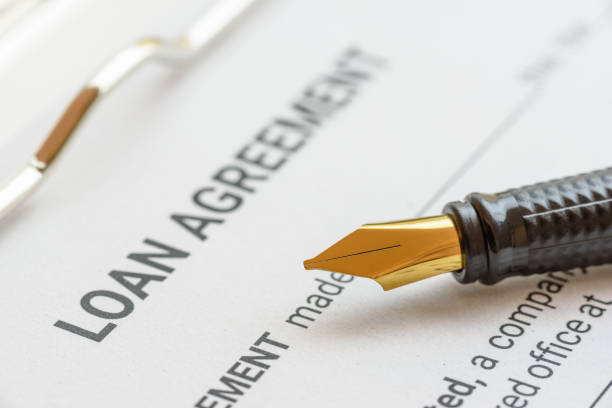Securing a mortgage is one of the most significant financial decisions individuals will make in their lifetime. Whether purchasing a home for the first time or refinancing an existing mortgage, understanding the intricacies of the mortgage process is crucial for several reasons.
Firstly, comprehension of the mortgage process empowers individuals to make informed decisions about their financial future. By understanding the various types of mortgages available, as well as their associated terms, interest rates, and fees, borrowers can choose the option that best aligns with their financial goals and circumstances. This knowledge enables them to select a mortgage that not only meets their immediate needs but also supports their long-term financial objectives, such as building equity, minimizing interest costs, or maximizing flexibility.
Furthermore, understanding the mortgage process helps borrowers navigate the complexities of loan applications and approvals with confidence and clarity. From gathering the necessary documentation to completing the application accurately, borrowers who are familiar with the process are better equipped to provide lenders with the information they need to assess their creditworthiness and approve their loan application. This can streamline the approval process, reduce delays, and increase the likelihood of securing favorable loan terms.
Moreover, comprehension of the mortgage process enables borrowers to identify and address potential challenges or red flags early in the process. Whether it's improving credit scores, resolving discrepancies in financial documentation, or addressing property appraisal issues, borrowers who understand the mortgage process can take proactive steps to overcome obstacles and increase their chances of loan approval. This proactive approach not only saves time and reduces stress but also helps borrowers avoid potential pitfalls that could derail their homeownership dreams.
Overall, understanding the mortgage process is essential for borrowers to make informed decisions, navigate the application and approval process effectively, and overcome potential challenges along the way. By arming themselves with knowledge and preparation, borrowers can embark on their homeownership journey with confidence and clarity, setting the stage for a successful and fulfilling experience.
Preparing for the Application Process:
Before diving into the mortgage application process, it's essential to take proactive steps to ensure readiness and maximize your chances of approval. This stage of preparation involves assessing your financial situation, gathering necessary documentation, and understanding key factors that lenders consider when evaluating loan applications.
1. Assessing Financial Readiness:
The first step in preparing for the mortgage application process is to assess your financial readiness. This involves evaluating your income, expenses, and existing debt obligations to determine how much you can afford to borrow and comfortably repay each month. Consider factors such as your current employment status, stability of income, and any potential changes in your financial situation that may affect your ability to repay the loan.
2. Determining Affordability:
Once you have a clear understanding of your financial situation, it's crucial to determine how much you can afford to borrow. Use online mortgage calculators to estimate monthly mortgage payments based on different loan amounts, interest rates, and loan terms. Compare these estimates to your current budget and financial goals to ensure that the mortgage you're considering aligns with your financial objectives and lifestyle.
3. Gathering Necessary Documentation:
The mortgage application process requires a significant amount of documentation to verify your income, assets, and creditworthiness. Start gathering necessary documents early to streamline the application process and avoid delays. Common documents required for a mortgage application may include:
- Proof of income (such as pay stubs, W-2 forms, or tax returns)
- Bank statements and asset verification
- Identification documents (such as a driver's license or passport)
- Documentation of existing debts (such as credit card statements or loan statements)
- Proof of down payment funds (such as bank statements or gift letters)
- Employment verification or proof of self-employment income
4. Understanding Credit Scores:
Your credit score plays a significant role in the mortgage application process, as it helps lenders assess your creditworthiness and risk as a borrower. Before applying for a mortgage, review your credit report and credit score to identify any errors or areas for improvement. Take proactive steps to improve your credit score if needed, such as paying down debt, disputing inaccuracies on your credit report, and avoiding new credit inquiries or late payments.
By taking these proactive steps to prepare for the mortgage application process, you can increase your chances of approval and streamline the overall experience. By understanding your financial readiness, determining affordability, gathering necessary documentation, and addressing any credit-related issues, you'll be well-positioned to navigate the application process with confidence and clarity.
The Mortgage Application Process:
1. Selecting a Lender: Begin by researching various lenders to find one that offers the mortgage terms and rates that suit your needs. Consider factors such as interest rates, fees, customer service, and reputation. You can choose from traditional banks, credit unions, online lenders, or mortgage brokers.
2. Prequalification: Many borrowers opt to get prequalified before formally applying for a mortgage. Prequalification involves providing basic financial information to a lender, who then estimates how much you may be able to borrow based on that information. While prequalification is not a guarantee of loan approval, it can give you an idea of your purchasing power and help you narrow down your home search.
3. Formal Application: Once you've chosen a lender and found a property you wish to purchase, it's time to submit a formal mortgage application. This involves providing detailed financial information, such as income, employment history, assets, debts, and personal identification. You may need to fill out paperwork online or in person, depending on the lender's preferences.
4. Credit Check and Documentation Review: After you submit your application, the lender will conduct a thorough review of your financial information. This includes pulling your credit report to assess your creditworthiness and verifying the information you provided with documentation such as pay stubs, bank statements, tax returns, and other financial records.
5. Appraisal and Property Evaluation: The lender will order an appraisal of the property you intend to purchase to ensure its value aligns with the loan amount. The appraiser will assess the property's condition, location, and comparable sales in the area to determine its fair market value. This step is crucial for the lender to protect its investment and ensure that the property serves as adequate collateral for the loan.
6. Underwriting: Once all documentation has been reviewed and the property appraisal is complete, your application will go through underwriting. During this process, an underwriter will assess your overall financial profile, the property's value, and the loan's risk factors to determine whether to approve or deny your mortgage application. The underwriter may request additional documentation or clarification on certain aspects of your application.
7. Loan Approval or Denial: After underwriting, the lender will make a decision on your mortgage application. If approved, you'll receive a loan commitment letter outlining the terms and conditions of the loan. If denied, the lender will provide an explanation for the decision, and you may have the opportunity to address any deficiencies or reapply with a different lender.
8. Closing: Once your mortgage is approved, you'll proceed to the closing stage, where you'll sign all necessary paperwork to finalize the loan. This includes the mortgage note, deed of trust or mortgage agreement, and other legal documents. You'll also pay any closing costs and fees associated with the loan. After closing, you'll officially become the owner of the property, and the mortgage will be in effect.
Understanding each step of the mortgage application process is essential for navigating the homebuying journey successfully. By being prepared, providing accurate information, and working closely with your lender, you can increase your chances of securing a mortgage that meets your needs and allows you to achieve your homeownership goals.
Appraisal and Property Evaluation:
Once you've submitted your mortgage application and provided all necessary documentation, the next step in the mortgage process is the appraisal and property evaluation. This crucial step helps ensure that the property you intend to purchase is worth the amount you're borrowing and serves as adequate collateral for the loan. Here's what you need to know about the appraisal and property evaluation process:
1. Ordering the Appraisal: After receiving your mortgage application, the lender will typically order an appraisal of the property through a licensed appraiser. The appraiser is an independent third party who is tasked with determining the fair market value of the property based on various factors such as its condition, size, location, and comparable sales in the area.
2. Property Inspection: The appraiser will visit the property to conduct a physical inspection. During this inspection, the appraiser will assess the property's exterior and interior, taking note of its overall condition, features, and any necessary repairs or maintenance issues. The appraiser may also take measurements and photographs to document the property's layout and condition.
3. Comparative Market Analysis: In addition to the property inspection, the appraiser will research recent sales of similar properties in the area to determine the property's fair market value. This comparative market analysis helps ensure that the appraisal reflects the property's true value based on current market conditions and comparable sales.
4. Appraisal Report: Once the appraisal is complete, the appraiser will compile their findings into a detailed appraisal report. This report will include the appraiser's assessment of the property's value, as well as information on the property's condition, features, and any factors that may have influenced the appraisal.
5. Review by the Lender: After receiving the appraisal report, the lender will review the findings to ensure that the property meets their lending criteria. The lender wants to ensure that the property's appraised value is sufficient to support the loan amount and that there are no significant issues that could affect the property's value or marketability.
6. Addressing Appraisal Issues: In some cases, the appraisal may come in lower than the agreed-upon purchase price or the amount needed to secure the loan. If this happens, the buyer and seller may need to negotiate a lower purchase price, the buyer may need to bring additional funds to closing to make up the difference, or the transaction may be canceled altogether. Additionally, if the appraisal identifies any major issues with the property, such as safety hazards or code violations, these may need to be addressed before the loan can proceed.
Overall, the appraisal and property evaluation process is a critical step in the mortgage process that helps protect both the lender and the borrower. By ensuring that the property is accurately valued and meets certain standards, the lender can make informed lending decisions, and the borrower can have confidence in their investment. Working with experienced professionals, such as appraisers and real estate agents, can help ensure a smooth appraisal process and facilitate a successful home purchase.
Closing and Loan Approval:
The closing stage of the mortgage process is the culmination of all your efforts and marks the final steps toward homeownership. It's an exciting yet critical phase where all parties involved come together to finalize the loan and transfer ownership of the property. Here's what you need to know about closing and loan approval:
1. Final Loan Approval: Before closing, your mortgage application will undergo a final review by the lender to ensure that all conditions have been met and that the loan meets their underwriting guidelines. If everything checks out, you'll receive a loan commitment letter confirming final loan approval and outlining the terms and conditions of the loan.
2. Scheduling the Closing: Once your loan is approved, the closing date will be scheduled. This is typically done by a closing agent or settlement agent who coordinates the closing process and ensures that all necessary parties, including the buyer, seller, real estate agents, and lenders, are present.
3. Reviewing Closing Documents: Before closing day, you'll receive a Closing Disclosure, which outlines the final terms of your loan, including the loan amount, interest rate, closing costs, and other fees. Review these documents carefully to ensure that everything is accurate and in line with your expectations. If you have any questions or concerns, don't hesitate to reach out to your lender or closing agent for clarification.
4. Bringing Funds to Closing: On closing day, you'll need to bring certified funds or arrange for a wire transfer to cover your closing costs and any down payment required. These funds must be in the form of a cashier's check or wire transfer and should be made payable to the closing agent or escrow company.
5. Signing Documents: At the closing appointment, you'll sign a variety of legal documents, including the mortgage note, deed of trust or mortgage agreement, and other disclosures required by law. The closing agent will guide you through each document and ensure that you understand the terms and obligations associated with your mortgage.
6. Paying Closing Costs: In addition to your down payment, you'll be responsible for paying closing costs, which can include fees for loan origination, appraisal, title insurance, recording, and escrow services, among others. These costs can vary depending on the lender, location, and specific details of your loan, so be sure to review your Closing Disclosure carefully and budget accordingly.
7. Recording and Disbursement: After all documents are signed and funds are collected, the closing agent will arrange for the transfer of ownership of the property and the recording of the mortgage lien with the appropriate county or municipal office. Once this is complete, you'll receive the keys to your new home, and the transaction will be officially closed.
Closing on a mortgage is a significant milestone that marks the beginning of your journey as a homeowner. By understanding the closing process and being prepared for what to expect, you can navigate this final stage with confidence and peace of mind, knowing that you're one step closer to achieving your homeownership goals.
Post-Approval Considerations:
After closing on your mortgage and officially becoming a homeowner, there are several important considerations to keep in mind as you transition into this new phase of homeownership:
1. Home Maintenance: As a homeowner, you're responsible for maintaining your property and keeping it in good condition. This includes routine tasks such as lawn care, landscaping, cleaning, and repairs. Establishing a maintenance schedule and budget can help you stay on top of these responsibilities and prevent small issues from turning into costly repairs down the line.
2. Budgeting for Homeownership Costs: In addition to your mortgage payment, there are other ongoing costs associated with homeownership, such as property taxes, homeowner's insurance, utilities, and maintenance expenses. Be sure to budget for these costs and set aside funds for unexpected repairs or emergencies to avoid financial strain.
3. Understanding Your Mortgage Terms: Take the time to review your mortgage documents carefully and understand the terms of your loan, including the interest rate, loan term, monthly payment amount, and any prepayment penalties or other fees. Knowing the specifics of your mortgage can help you make informed decisions about your finances and plan for the future.
4. Building Equity: Over time, as you make mortgage payments and your home's value appreciates, you'll build equity in your property. Equity represents the difference between the current market value of your home and the outstanding balance on your mortgage. Building equity can provide financial security and flexibility, enabling you to access funds through home equity loans or lines of credit if needed.
5. Exploring Refinancing Options: Depending on market conditions and your financial goals, you may consider refinancing your mortgage to take advantage of lower interest rates, shorten the loan term, or tap into your home's equity. Keep an eye on interest rate trends and consult with a mortgage professional to explore whether refinancing could benefit you.
By staying proactive and informed about these post-approval considerations, you can make the most of your homeownership experience and ensure that your investment continues to grow and thrive in the years to come.
Securing a mortgage and purchasing a home is a significant milestone that represents a major financial commitment and a step towards achieving your homeownership dreams. From the initial application process to closing on your loan and beyond, navigating the mortgage process requires careful planning, preparation, and understanding of the various steps involved.
By following the step-by-step guide outlined in this blog post, you can approach the mortgage process with confidence and clarity, knowing what to expect at each stage and how to navigate potential challenges along the way. From assessing your financial readiness and gathering necessary documentation to selecting the right lender, completing the application, and closing on your loan, each step plays a crucial role in helping you achieve your homeownership goals.
Moreover, post-approval considerations such as home maintenance, budgeting for homeownership costs, understanding your mortgage terms, building equity, and exploring refinancing options are essential for ensuring a successful and fulfilling homeownership experience.
Ultimately, by arming yourself with knowledge, preparation, and a clear understanding of your financial goals, you can navigate the mortgage process with confidence and embark on your journey as a homeowner with excitement and peace of mind. Congratulations on this exciting milestone, and best wishes for a rewarding homeownership journey ahead!








